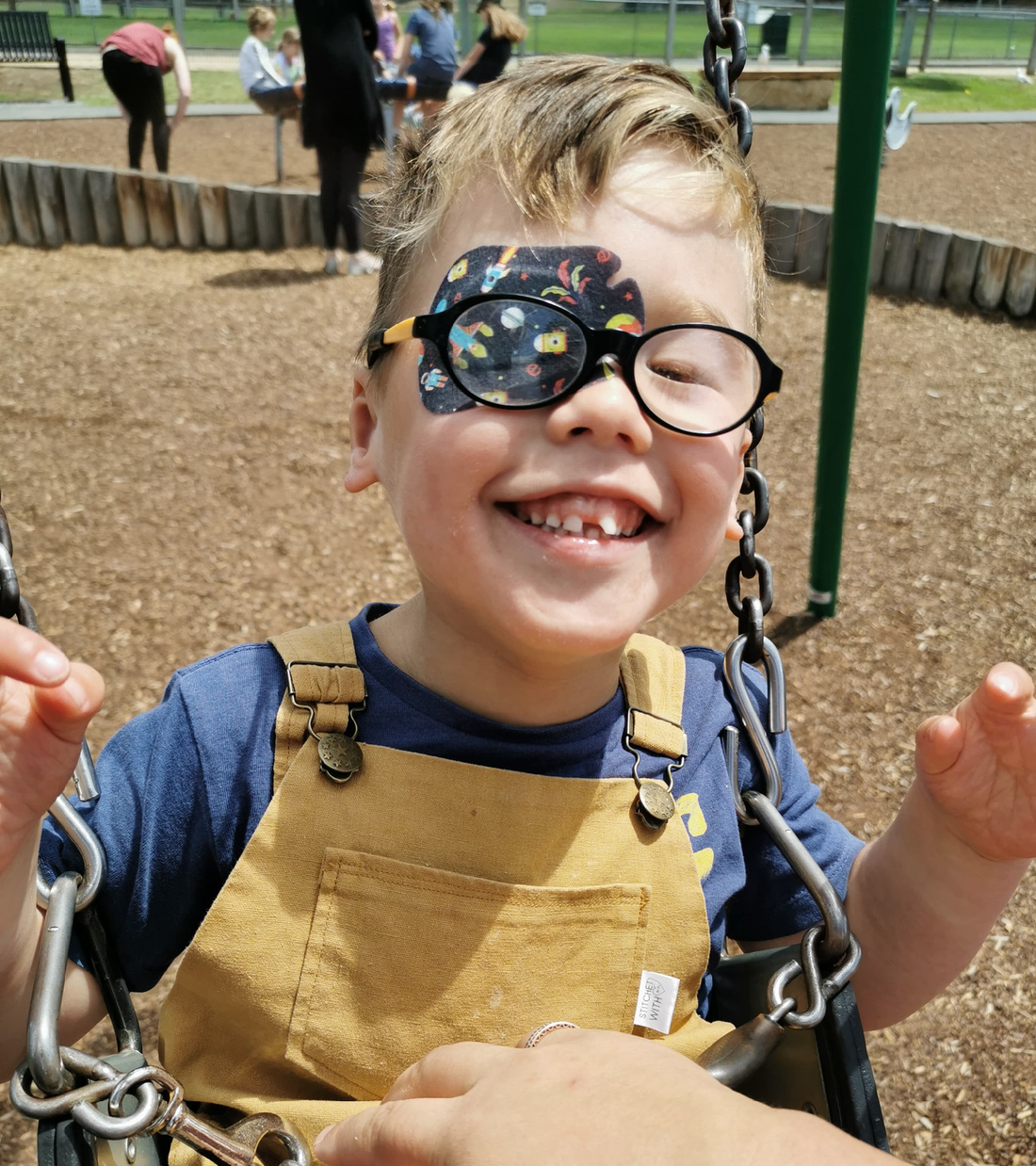10 Activities To Do While Patching!
We get it! Keeping your little one cool, calm and collected while patching can be a struggle as their brain can no longer rely on the stronger eye and must work extra hard to see. Thankfully, there are a huge range of FUN activities your child can do while patching that are also great for the development of essential life skills. Check them out below!
1. Drawing, Painting and Colouring In
Arts and crafts are a great way to promote creativity in kids, whilst encouraging their curious eye to focus on visual analysis and hand-eye coordination. Painting, drawing and colouring in assists in the development of fine motor skills as the small muscles in their hands, wrists and fingers must work extra hard to grip and guide their tools. Creating beautiful artworks also teaches creative problem solving, patience and confidence as your child must plan and adapt their designs to achieve a beautiful end result.
2. Puzzles
Building puzzles is a fantastic way to teach children how to see the bigger picture, whilst developing essential memory, fine motor and problem solving skills. When kids see a puzzle, they must interpret the various images and shapes, using this information until the pieces start to come together. Puzzles are also a great way to teach kids the importance of patience and concentration and helps them build confidence in their ability to start and finish a task.
3. Sensory Play
We LOVE sensory play as these hands-on activities stimulate all five senses to increase body and spatial awareness. Experimenting with different textures, tastes, smells, sounds and images also stimulate nerve connections in the brain, allowing kids to become more comfortable in adapting to new situations and environments. When met with positive reinforcement in these situations, kids can gain confidence in their ability to adapt and become curious about the world around them. Sensory play is also a fantastic way to help over-stimulated kids stay calm, as they become grounded when focusing on their senses. Check out our range sensory activities for kids, including making bath bombs, stress balls, slime, cloud putty and sensory jars on our YouTube.
4. Learn an Instrument
5. Cook Something Delicious
When your child learns a new recipe, they must use basic math skills to weigh, count and measure ingredients. In following steps and listening to instructions, they will also gain essential executive functioning skills which help them become proficient at time management, organisation and maintaining their attention on a task. Cooking also gives kids the opportunity to experience different flavours and textures and expand their palette (which we are sure the parents of picky eaters will appreciate). We have a great range of delicious, simple recipes for your kids to create while patching on our YouTube including Weetbix Bliss Balls, Unicorn Bark, Eggs in a Mug and smoothies.
6. Create a Sculpture with PlayDoh
While your child moulds, squishes and shapes PlayDoh into a beautiful sculpture, they are working the tiny muscles in their hands, wrists and fingers, allowing their fine motor skills to develop. These muscles are essential at school and in the home, as they enable kids to grip small objects like pencils and their toothbrush, as well as complete tasks such as tying their shoes or doing up buttons. Sculpting with PlayDoh encourages imagination as there is a plethora of colours and creations they can make from scratch. It also enhances hand-eye coordination as they can use different tools like cookie cutters and rolling pins to bring their imagination to life.
7. Build a Something Amazing with Lego
Like sculpting with PlayDoh, building Lego structures is a great way to develop fine motor skills and improve hand-eye coordination. When following a Lego guide, kids gain essential executive functioning skills as they must practice persistence, patience and following instructions. Alternatively, you can promote imagination and creativity in your child by encouraging them to plan and create their own structures like a Lego city, people, cars or whatever their heart desires. If your patching superstar has a sibling, get them involved too, as this helps teach teamwork and communication when playing with others.
8. Get Outdoors
At Speckles, we're all about embracing the outdoors as exposure to natural light is has been proven to promote healthy eyes and bodies. When your child is outdoors they often have to look at and follow objects that are far away, reducing the progression or development of near-sightedness (myopia). Additionally, they can get their daily hit of Vitamin D and are moving their bodies, improving gross motor functioning, muscle and bone strength as well as their physical endurance. While playing outdoors your child can learn about nature and the environment, increasing their appreciation for the world around them. You can try activities like gardening, nature scavenger hunts, building sandcastles or creating an obstacle course.
9. Read a Book
Reading is an amazing way to spark imagination and stimulate curiosity in kids as they are exposed to new situations and ideas. While your child reads or listens to a story, they expand their knowledge of sounds, words and language, helping them develop early literacy skills. You can teach your child about different cultures, emotions and the world through a story, enabling them to come to terms with different ideas and events in a safe environment. Reading a book is also a great way to help kids understand why they need to patch or wear glasses. We recommend you check out Rex's Specs by Jack Hughes, Dinosaur Farm by Kristen Silva, The Patch by Justine Chen Headly and The Pirate of Kindergarten by George Ella Lyon.


